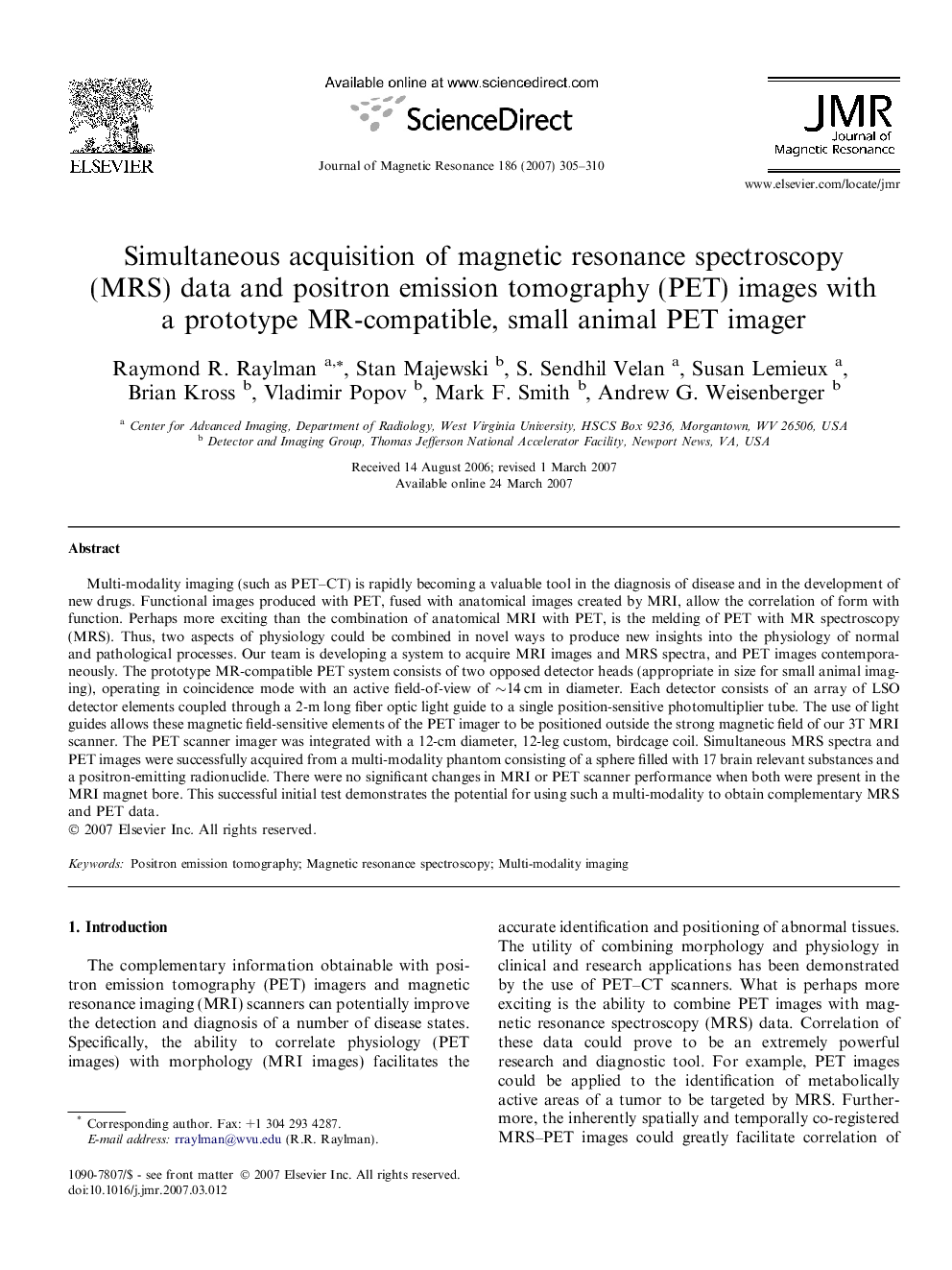| Article ID | Journal | Published Year | Pages | File Type |
|---|---|---|---|---|
| 5407653 | Journal of Magnetic Resonance | 2007 | 6 Pages |
Abstract
Multi-modality imaging (such as PET-CT) is rapidly becoming a valuable tool in the diagnosis of disease and in the development of new drugs. Functional images produced with PET, fused with anatomical images created by MRI, allow the correlation of form with function. Perhaps more exciting than the combination of anatomical MRI with PET, is the melding of PET with MR spectroscopy (MRS). Thus, two aspects of physiology could be combined in novel ways to produce new insights into the physiology of normal and pathological processes. Our team is developing a system to acquire MRI images and MRS spectra, and PET images contemporaneously. The prototype MR-compatible PET system consists of two opposed detector heads (appropriate in size for small animal imaging), operating in coincidence mode with an active field-of-view of â¼14Â cm in diameter. Each detector consists of an array of LSO detector elements coupled through a 2-m long fiber optic light guide to a single position-sensitive photomultiplier tube. The use of light guides allows these magnetic field-sensitive elements of the PET imager to be positioned outside the strong magnetic field of our 3T MRI scanner. The PET scanner imager was integrated with a 12-cm diameter, 12-leg custom, birdcage coil. Simultaneous MRS spectra and PET images were successfully acquired from a multi-modality phantom consisting of a sphere filled with 17 brain relevant substances and a positron-emitting radionuclide. There were no significant changes in MRI or PET scanner performance when both were present in the MRI magnet bore. This successful initial test demonstrates the potential for using such a multi-modality to obtain complementary MRS and PET data.
Related Topics
Physical Sciences and Engineering
Chemistry
Physical and Theoretical Chemistry
Authors
Raymond R. Raylman, Stan Majewski, S. Sendhil Velan, Susan Lemieux, Brian Kross, Vladimir Popov, Mark F. Smith, Andrew G. Weisenberger,
